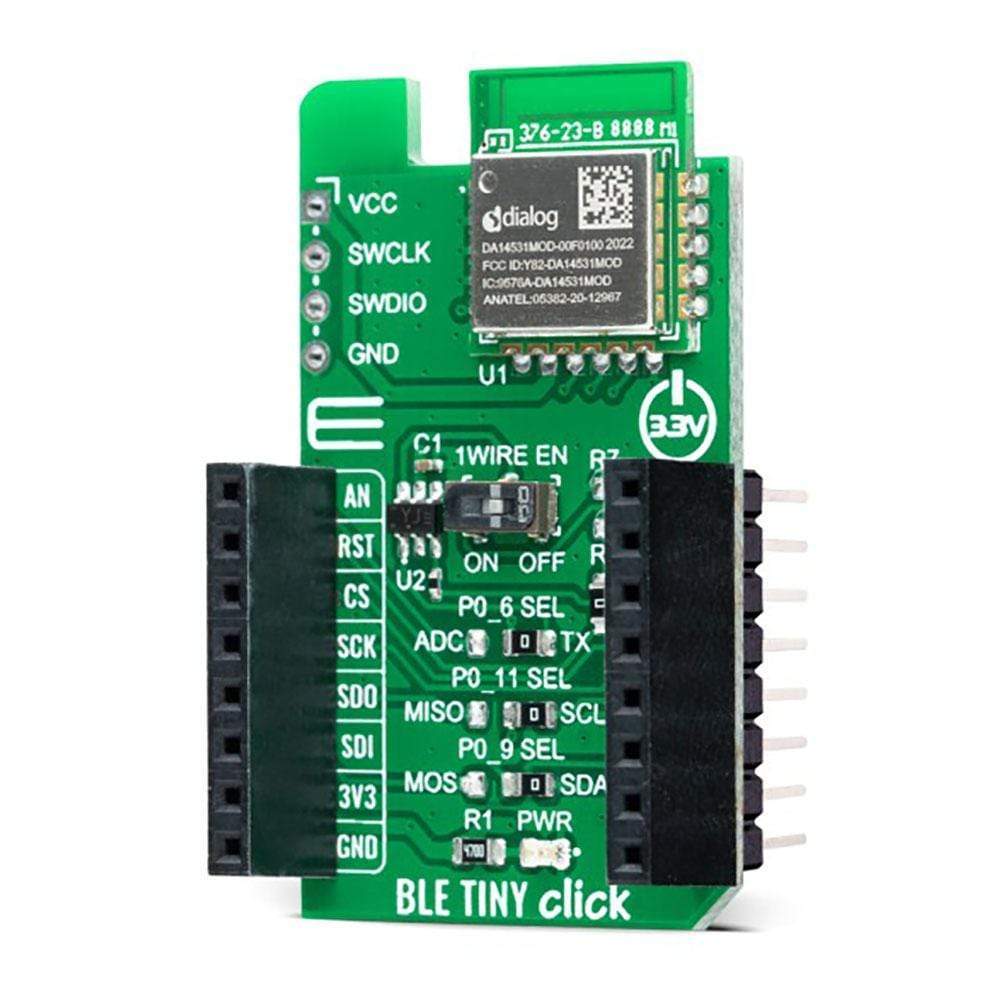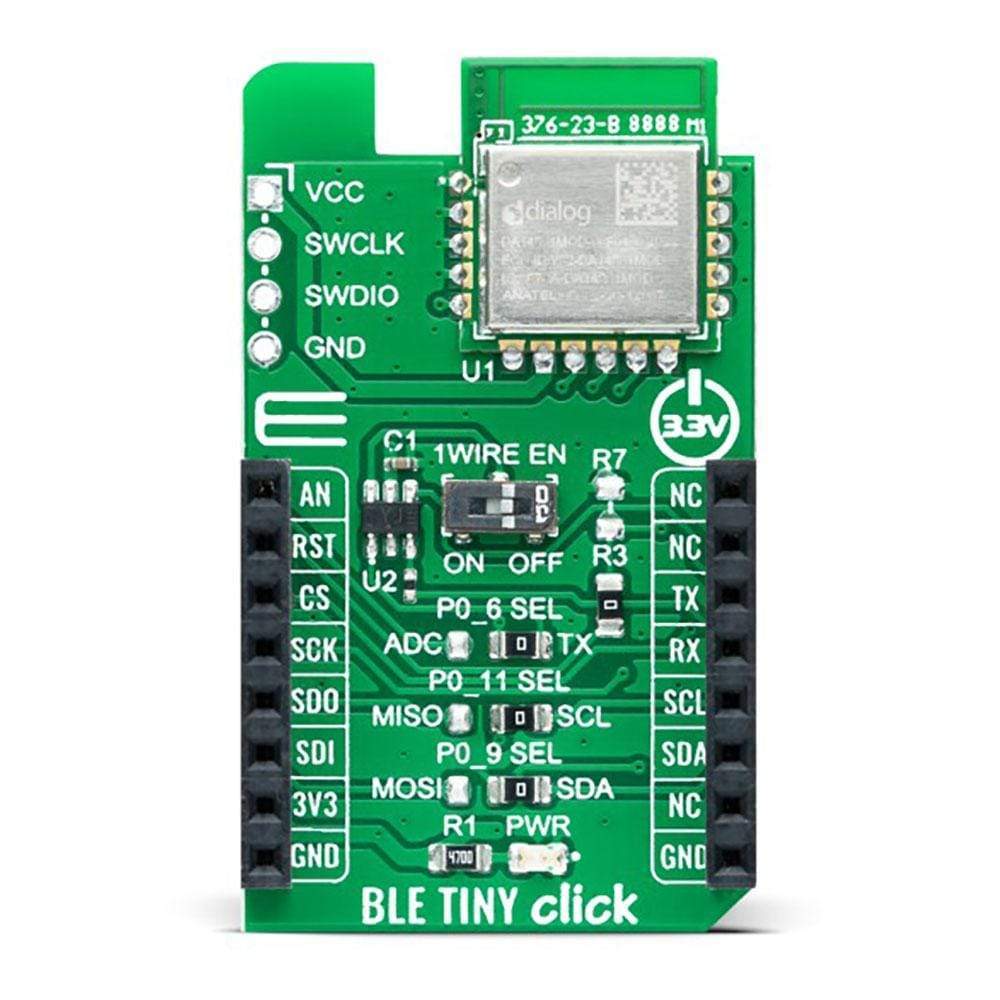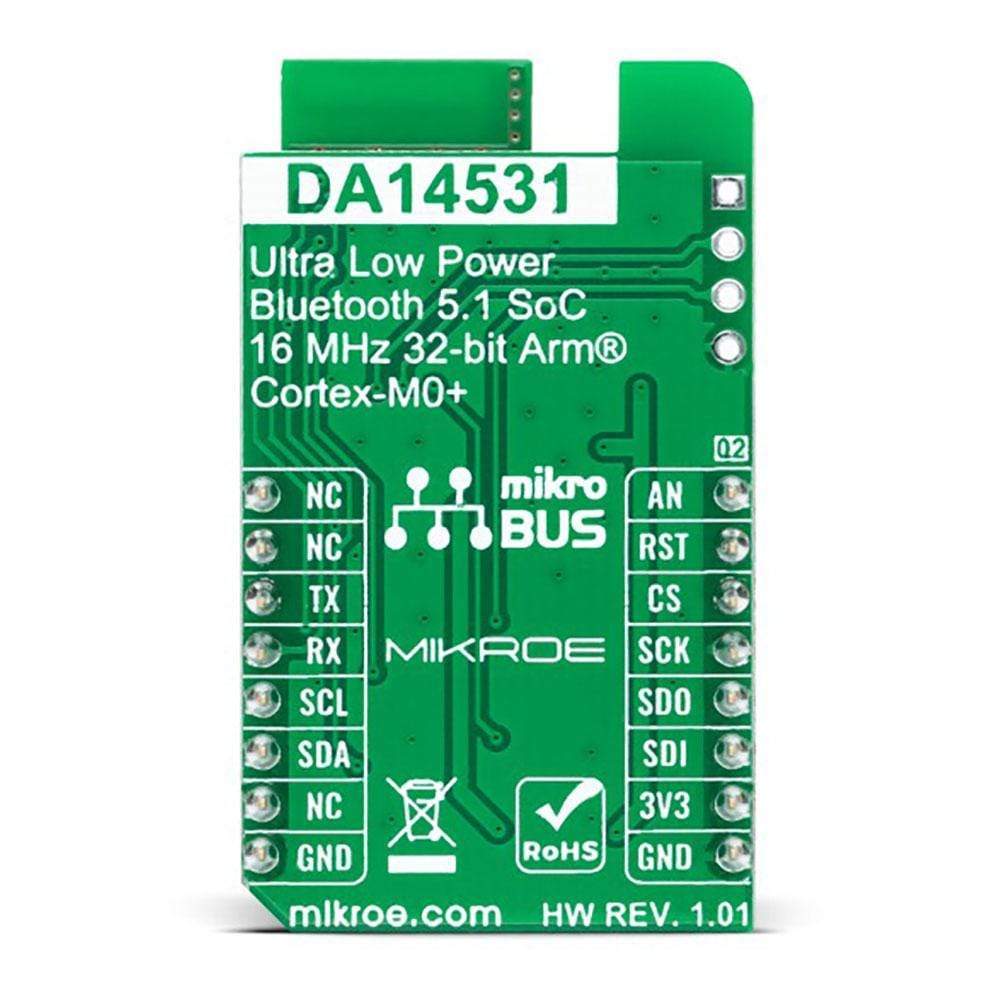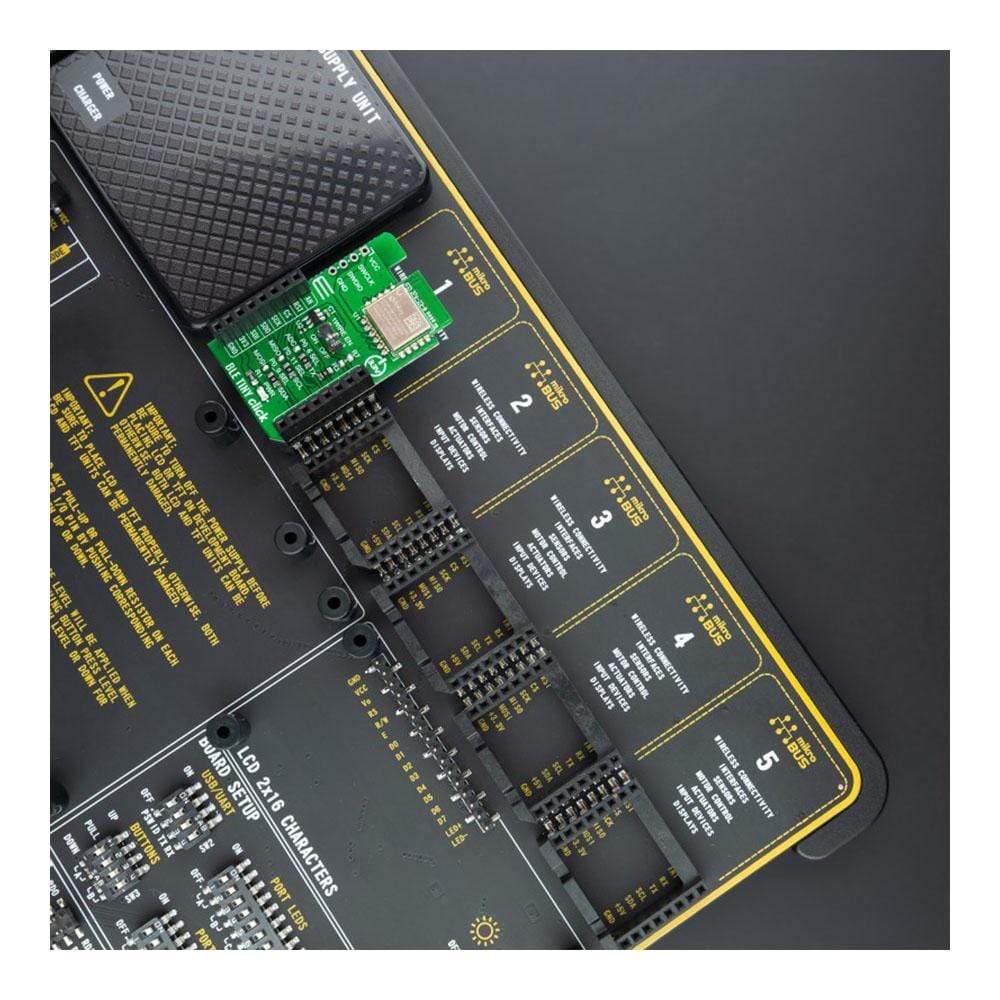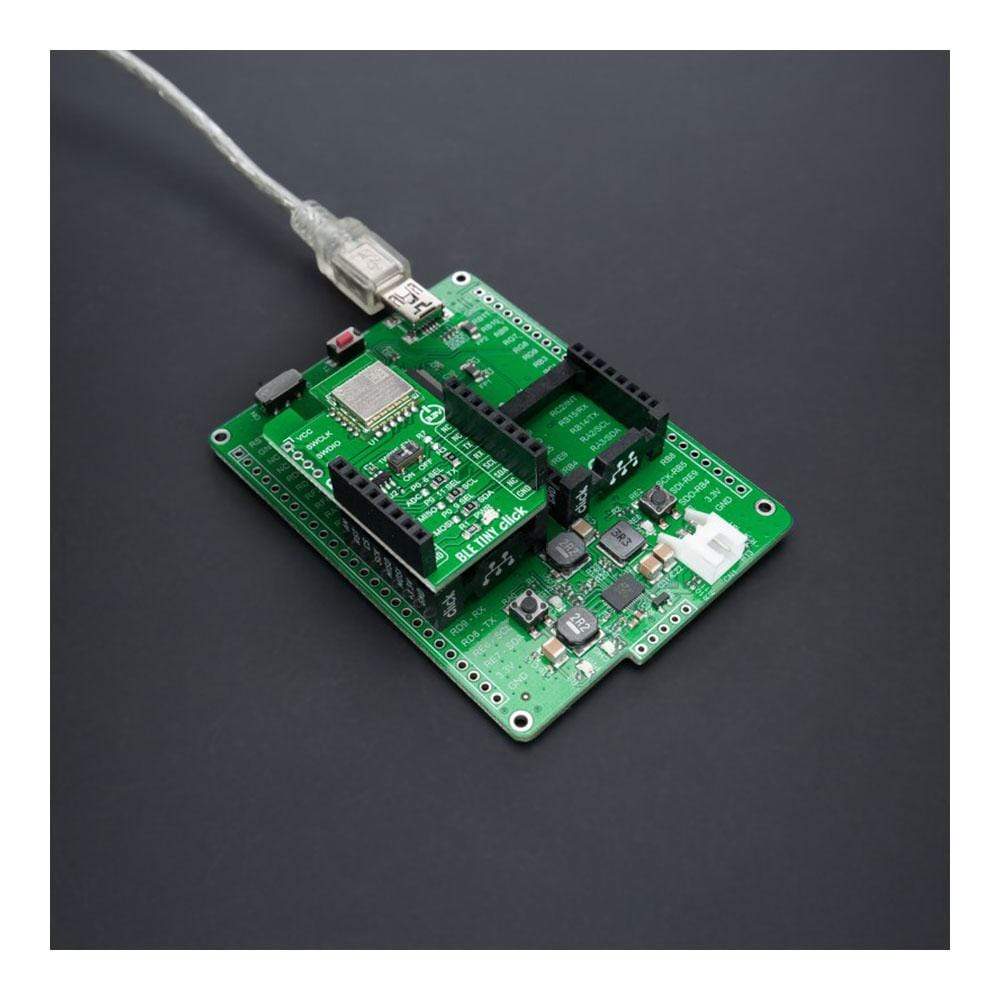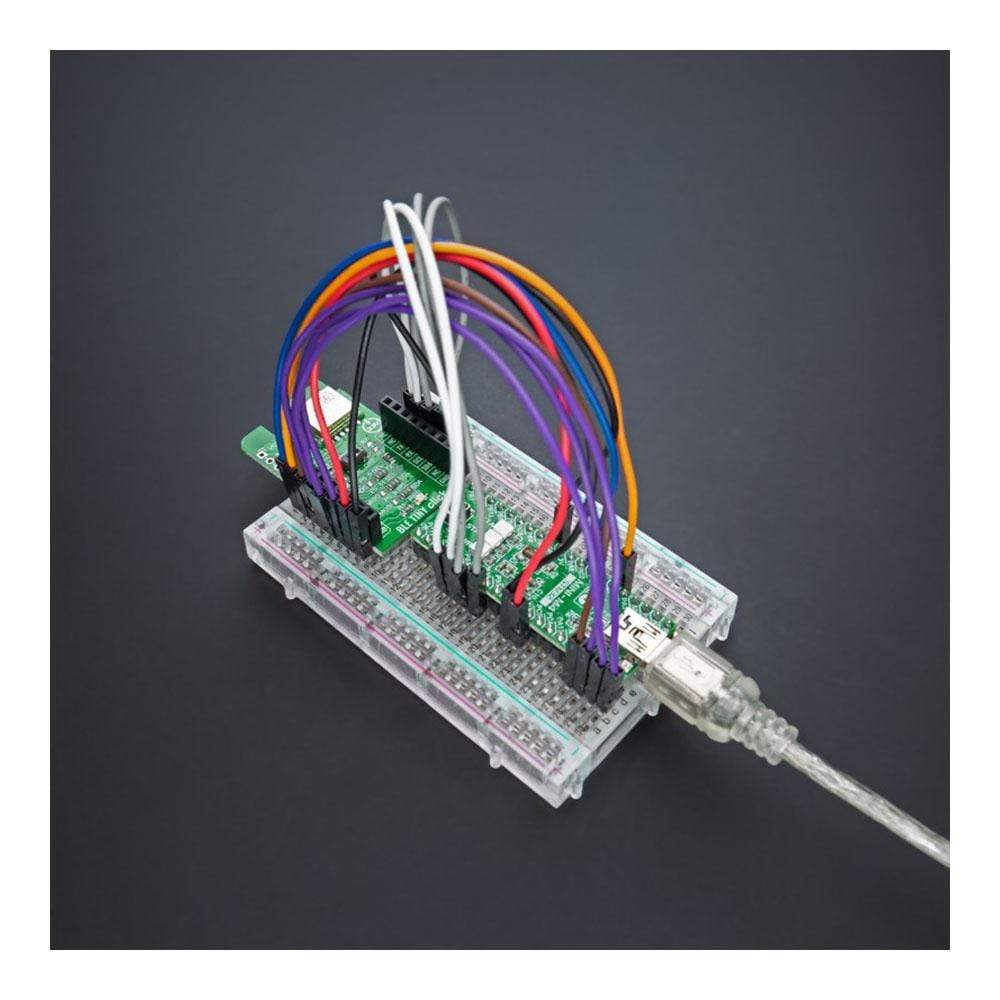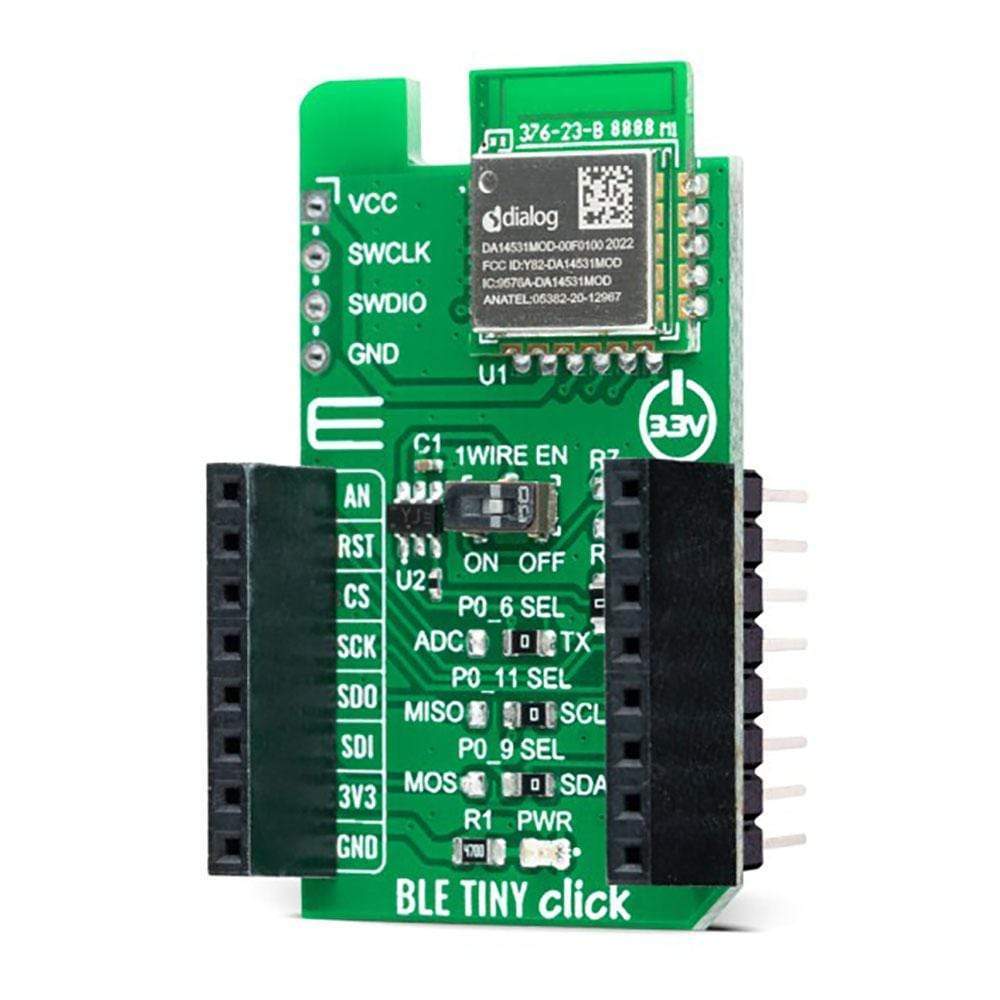
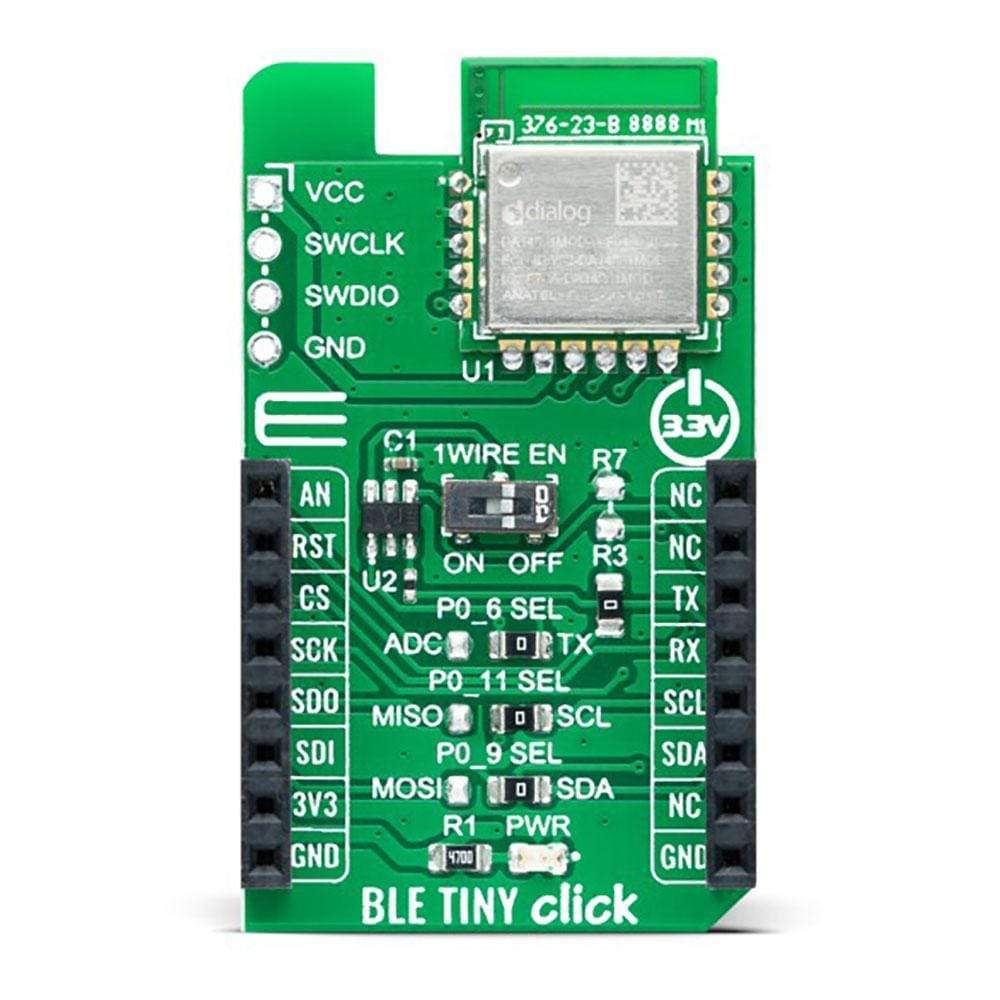
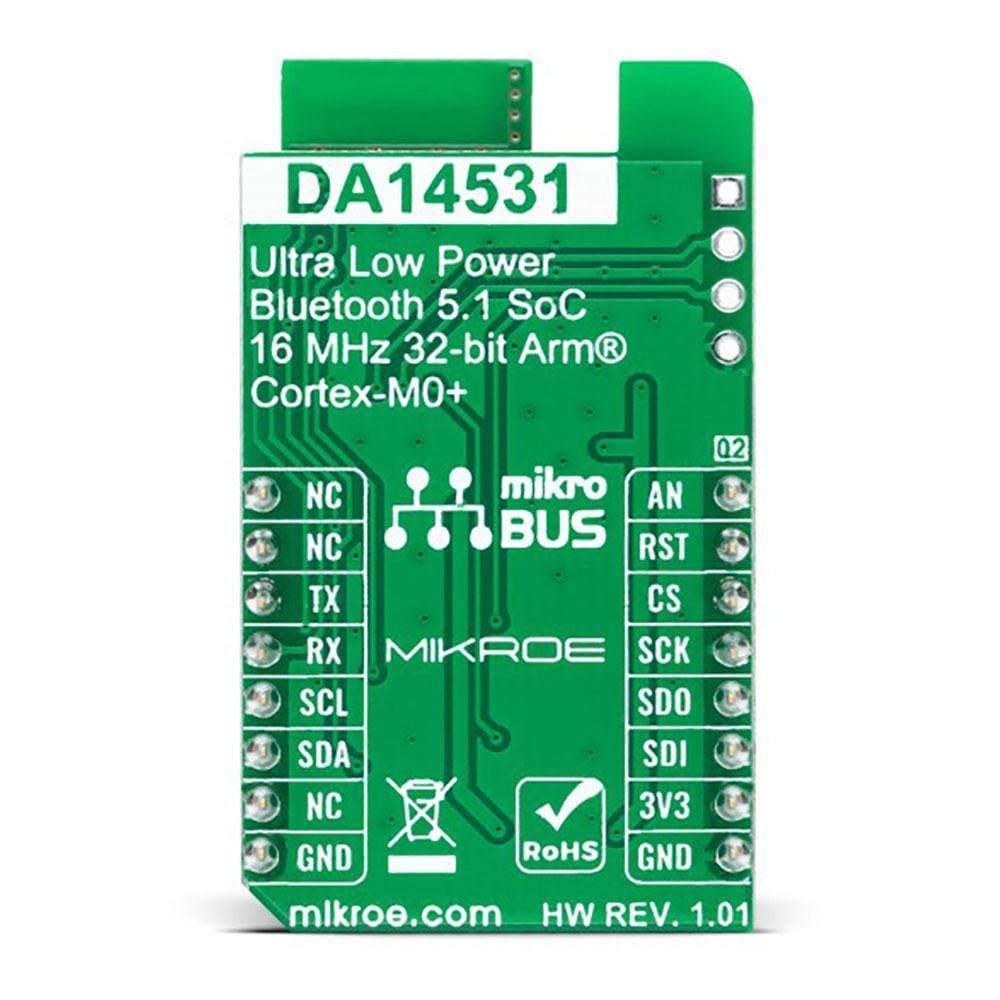
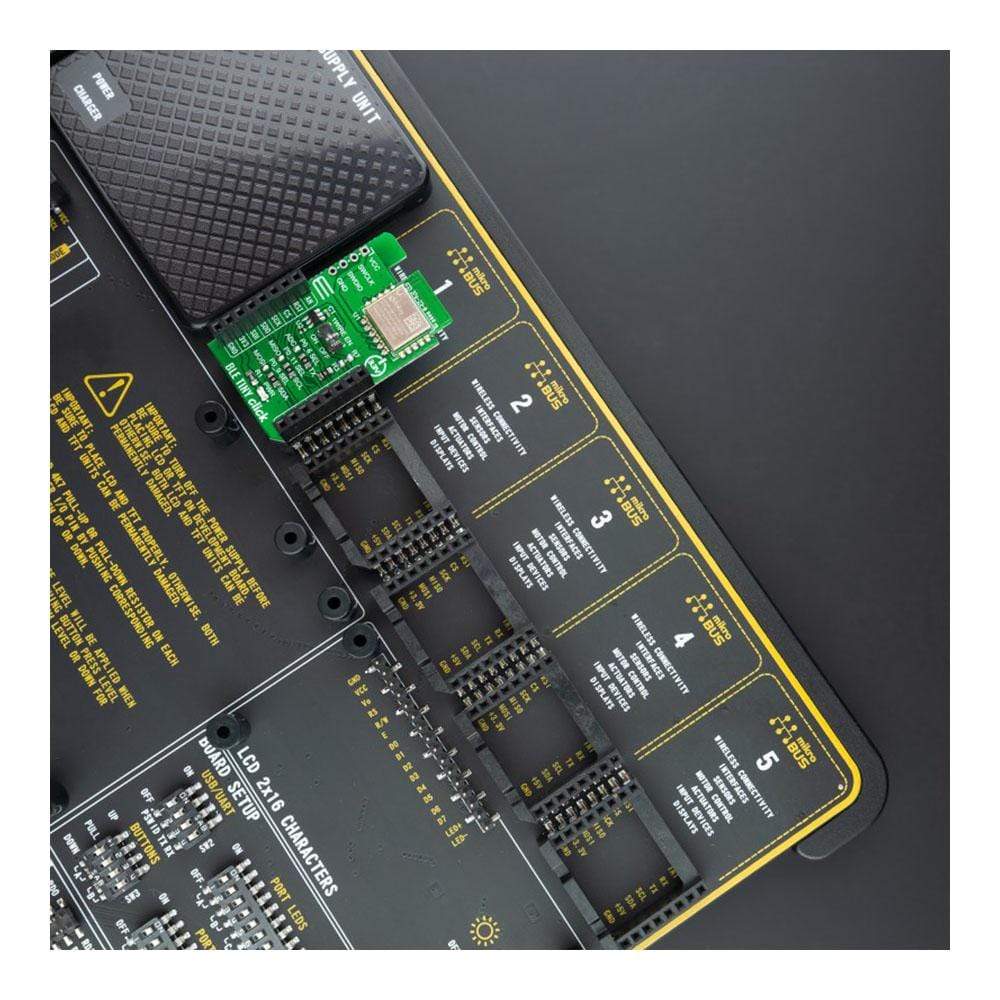
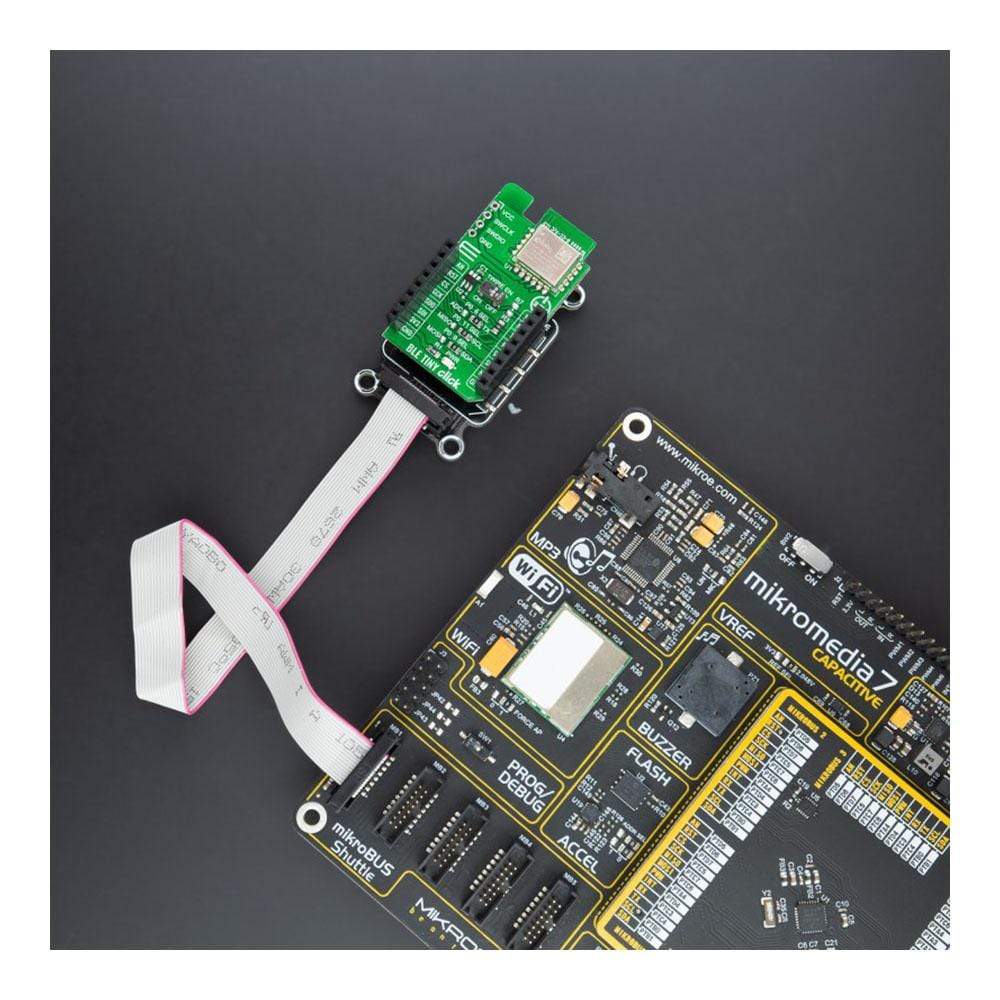
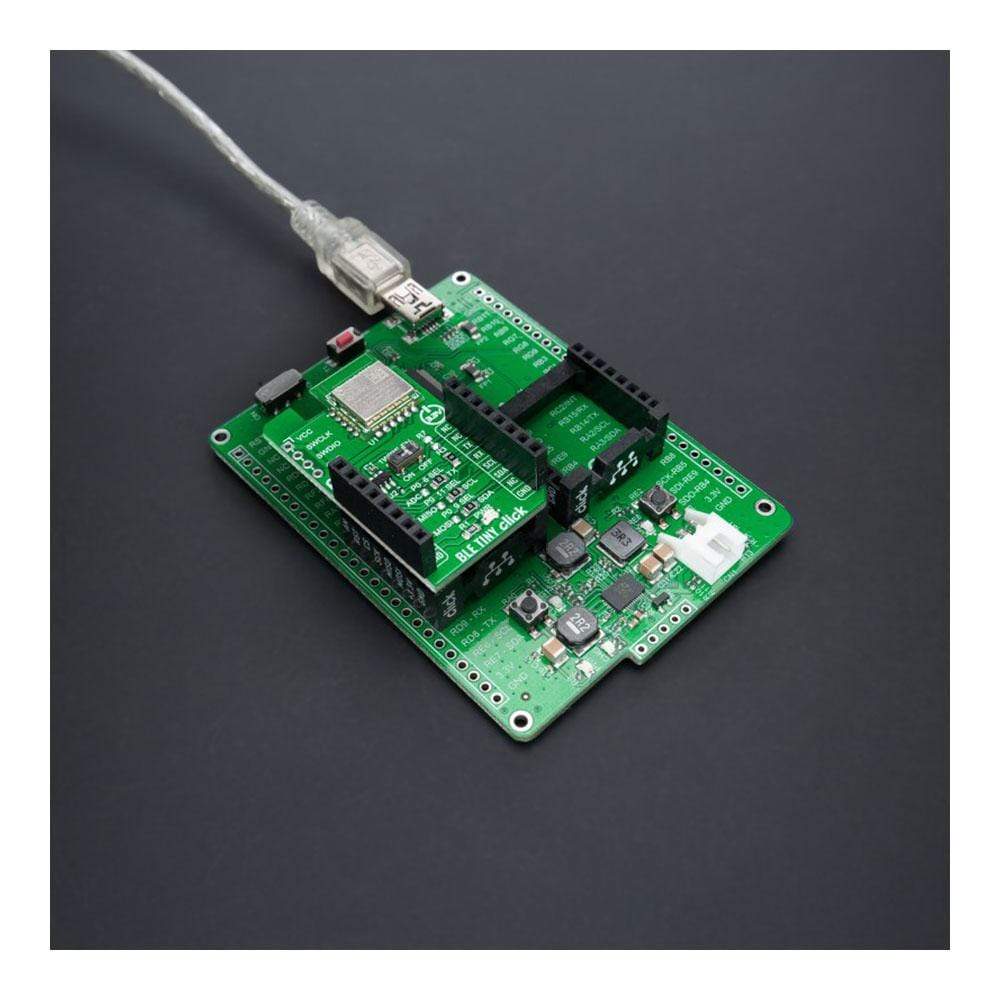
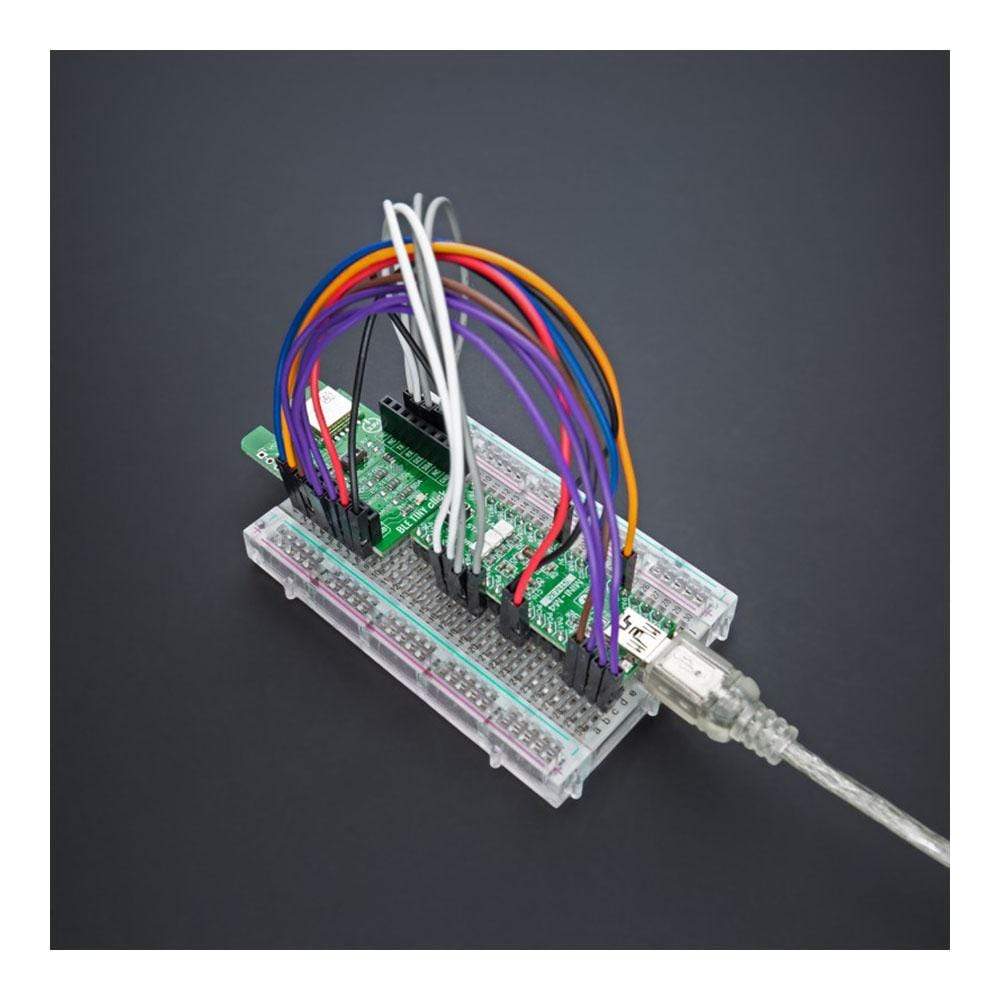
Overview
The BLE Tiny Click Board™ is a compact add-on board that provides BLE connectivity for any embedded application. This board features the DA14531MOD, SmartBond TINY module based on the world’s smallest and lowest power Bluetooth 5.1 System-on-Chip (SoC) from Dialog Semiconductor. This Click Board™ is effectively future-proofed due to a combination of Bluetooth 5.1 compliance and support for over-the-air software updates. The DA14531 module is certified for worldwide operation; it comes with an integrated antenna and all external components, including passives, XTAL, antenna, Flash memory, and easy-to-use software, making Bluetooth low energy development more manageable than ever before. This Click Board™ is suitable for wireless networking in portable medical, remote controls, industrial applications, asset tags and beacons, and more.
The BLE Tiny Click Board™ is supported by a mikroSDK compliant library, which includes functions that simplify software development. This Click Board™ comes as a fully tested product, ready to be used on a system equipped with the mikroBUS™ socket.
Downloads
Le BLE Tiny Click Board™ est une carte complémentaire compacte qui fournit une connectivité BLE pour toute application embarquée. Cette carte est équipée du module DA14531MOD, SmartBond TINY basé sur le système sur puce (SoC) Bluetooth 5.1 le plus petit et le plus faible en consommation au monde de Dialog Semiconductor. Cette Click Board™ est efficacement à l'épreuve du temps grâce à une combinaison de conformité Bluetooth 5.1 et de prise en charge des mises à jour logicielles en direct. Le module DA14531 est certifié pour un fonctionnement dans le monde entier ; il est livré avec une antenne intégrée et tous les composants externes, y compris les composants passifs, XTAL, l'antenne, la mémoire Flash et un logiciel facile à utiliser, ce qui rend le développement Bluetooth Low Energy plus facile à gérer que jamais. Cette Click Board™ convient à la mise en réseau sans fil dans les applications médicales portables, les télécommandes, les applications industrielles, les étiquettes et balises d'actifs, etc.
Le BLE Tiny Click Board™ est pris en charge par une bibliothèque compatible mikroSDK, qui comprend des fonctions qui simplifient le développement logiciel. Cette Click Board™ est un produit entièrement testé, prêt à être utilisé sur un système équipé du socket mikroBUS™.
| General Information | |
|---|---|
Part Number (SKU) |
MIKROE-4582
|
Manufacturer |
|
| Physical and Mechanical | |
Weight |
0.019 kg
|
| Other | |
Country of Origin |
|
HS Code Customs Tariff code
|
|
EAN |
8606027382376
|
Warranty |
|
Frequently Asked Questions
Have a Question?
Be the first to ask a question about this.

